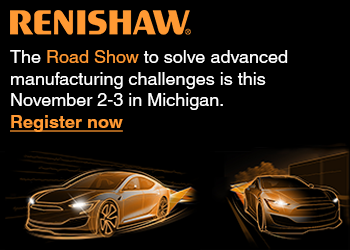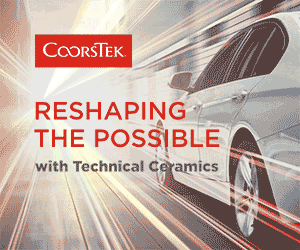County Executive Elrich, Senator Van Hollen, Deputy Secretary Trottenberg, Deputy Assistant Secretary Berube joined AlphaStruxure, Schneider Electric and Carlyle leadership to cut the ribbon and participate in “first plug-in” of a County e-bus This innovative project supports the sustainability, electrification, and climate resilience goals of Montgomery County, Maryland Microgrid includes distributed solar energy generation, renewable… Continue reading AlphaStruxure, Montgomery County (MD), U.S. Senator Van Hollen, U.S. Representative Raskin, USDOT, USDOE & Corporate Leaders Celebrate Launch of Integrated Microgrid Powering County’s Ride On Electric Bus Fleet–a First in the Washington Region
Category: Automotive
Seeing Is Believing: Sylvania Lights Up AAPEX 2022 With Its LED Fog And Powersports Vehicle Lighting
HILLSBORO, N.H., Oct. 31, 2022 /PRNewswire/ — Osram Sylvania, the leader in automotive lighting solutions for the automotive aftermarket and original equipment manufacturers (OEMs), today announced it will be showcasing its products at the Automotive Aftermarket Products Expo (AAPEX) taking place Nov. 1-3 in Las Vegas. “SYLVANIA’s presence at AAPEX once again underlines our commitment to… Continue reading Seeing Is Believing: Sylvania Lights Up AAPEX 2022 With Its LED Fog And Powersports Vehicle Lighting
GAC ouvre un nouveau centre de R&D en Europe pour renforcer l’innovation et accroître le bassin de talents
GUANGZHOU, Chine, 31 octobre 2022 /PRNewswire/ — Le groupe GAC a récemment annoncé l’ouverture d’un centre de recherche et de développement européen GAC (R&D Center Europe) à Milan, en Italie. Dans le cadre de l’objectif actuel de développement à l’échelle internationale de GAC, le lancement du R&D Center Europe marque une nouvelle étape dans la… Continue reading GAC ouvre un nouveau centre de R&D en Europe pour renforcer l’innovation et accroître le bassin de talents
BeyonCa : Une nouvelle ère pour les VE intelligents haut de gamme
PÉKIN, MUNICH et SINGAPOUR, 31 octobre 2022 /PRNewswire/ — Le fabricant de véhicules électriques (VE) intelligents haut de gamme BeyonCa a annoncé son lancement mondial le 30 octobre en présentant la BeyonCa Gran Turismo Opus 1, une création rendue possible par la position et les capacités uniques de l’entreprise. Composée d’une équipe d’élite de vétérans… Continue reading BeyonCa : Une nouvelle ère pour les VE intelligents haut de gamme
El nuevo centro de I+D de GAC en Europa fortalecerá la innovación y aumentará el grupo de talentos
GUANGZHOU, China, 31 de octubre de 2022 /PRNewswire/ — GAC Group anunció recientemente la apertura del Centro de investigación y desarrollo en Europa (Centro de I+D Europa) de GAC en Milán, Italia. Como parte de la misión continua de GAC de globalizarse, la inauguración del Centro de I+D Europa marca otro hito en la estrategia de expansión… Continue reading El nuevo centro de I+D de GAC en Europa fortalecerá la innovación y aumentará el grupo de talentos
CATL y VinFast consolidan su cooperación estratégica global para promover la movilidad eléctrica en todo el mundo
OSAKA, Japón, 31 de octubre de 2022 /PRNewswire/ — Contemporary Amperex Technology Co., Limited (“CATL”) y VinFast Trading & Manufacturing Joint Stock Company (“VinFast”) anunciaron hoy un memorando de entendimiento (MOU) para la cooperación estratégica global a fin de ampliar la colaboración en áreas como los productos de chasis de skateboard CIIC (“CATL integrated intelligent chassis”).… Continue reading CATL y VinFast consolidan su cooperación estratégica global para promover la movilidad eléctrica en todo el mundo
TeraWatt to build Electric Corridor of charging sites for electric trucks along I-10 from Long Beach To El Paso
When we spoke with TeraWatt Infrastructure CEO Neha Palmer back in 2021, we were impressed by her company’s comprehensive approach. Charging hubs for fleet vehicles need to incorporate not only charging stations, but energy management systems, and possibly energy storage and on-site generation. Charging providers need to work closely with local electrical utilities, and they… Continue reading TeraWatt to build Electric Corridor of charging sites for electric trucks along I-10 from Long Beach To El Paso
Fermata’s newest V2X bidirectional charger, the FE-20
Fermata Energy, a specialist in vehicle-to-everything (V2X) charging systems, has successfully deployed its FE-15 bidirectional charger on multiple commercial projects. Now the company has added a second commercial V2X-capable bidirectional charger to its lineup, the FE-20. The FE-20 is a DC fast charger that can both charge and discharge the battery of a bidirectionally-enabled EV,… Continue reading Fermata’s newest V2X bidirectional charger, the FE-20
DOE requests information about non-functional public EV chargers
The DOE may get more replies than it bargained for to its recent Request for Information (DE-FOA-0002797, PDF) regarding “the prevalence of and solutions to electric vehicle no-charge events.” As every frequent user of public charging knows, the uptime performance of public chargers can be abysmal—the doggone things seem to be out of order a… Continue reading DOE requests information about non-functional public EV chargers
Tritium and DC-America are building a coast-to-coast EV fast charging network
/ The American-made and Bipartisan Infrastructure Law-funded stations are built on skids for easy and fast deployment DC-America EV stations with Tritium DC fast chargers are built on a skid platform, requiring little digging on-site.Image: Tritium Tritium and DC-America are partnering to build a nationwide EV fast charging network and have qualified for federal funding… Continue reading Tritium and DC-America are building a coast-to-coast EV fast charging network


